Wisconsin Hunters Had a Great 2020 Bear Season
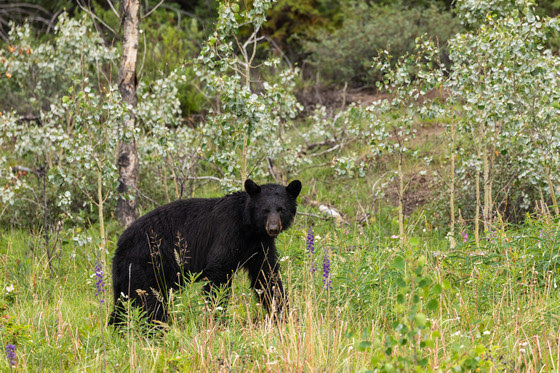
Preliminary data from the Wisconsin Department of Natural Resources (DNR) shows hunters harvested 4,129 bears during the 2020 Wisconsin black bear season, an increase from the 3,679 reported in 2019.
“Wisconsin is a national leader in bear hunting, and preliminary registration data shows that to be true once again this year,” said Randy Johnson, DNR large carnivore specialist. “Despite slight reductions in the overall quota and total permits available to hunters, we saw harvest increase by about 450 bears from the previous year. Once again, the data from harvested bears provided by hunters will be critical to tracking bear population trends and establishing future harvest quotas to achieve population management objectives.”
This year, all four management zones met and exceeded harvest goals, driven primarily by above-average hunter success rates, especially across the three northern zones (A, B, D). With the exception of Zone A (north-central) where a reduction in permits led to a decrease in harvest (from 946 to 892), all zones saw increased harvest from the previous year (Zone B: from 658 to 753; Zone C: from 900 to 1046; Zone D: from 1,175 to 1,438). The data from this year’s harvest will play an important role in determining future harvest levels and ensuring that Wisconsin’s bear population remains healthy and sustainable into the future.
“The first week of the bear season in early September saw below-average temperatures, rain and even a couple of hard frosts across much of the northern part of the state,” Johnson said. “This weather can be generally favorable for bear hunting, particularly for hunting with the use of bait, and likely contributed to the high success rates for those hunters at the beginning of the season. The second week was mostly dry with moderate temperatures, which can be more favorable for those hunting with hounds. In addition, as a result of the pandemic, folks may have had more time to devote to hunting bear this year than in other years. These factors, combined with a healthy bear population, likely all contributed to the high success rates this year.”
Zone-specific preliminary registration information is as follows:
| Zone | Preliminary Harvest | % of Quota Harvested | Hunter Success Rate |
| A | 892 | 112% | 64% |
| B | 753 | 101% | 69% |
| C | 1046 | 116% | 16% |
| D | 1438 | 120% | 63% |
Reflecting continued high interest in Wisconsin’s bear hunting opportunities, more than 119,000 hunters applied for either a harvest permit or preference point for the 2020 season.
Hunters wishing to obtain a permit or preference points for the 2021 season are encouraged to apply through GoWild before the Dec. 10 deadline. New zones will be in effect for the 2021 season, and hunters should make sure to check the new zone map before selecting their zone in GoWild.
“What’s not captured in harvest information are the countless memories made among families and friends and all the hours spent outside taking in Wisconsin’s wonderful outdoors,” Johnson said. “The bear hunting tradition in Wisconsin is very strong, and interest in the activity continues to grow.”
Visit the DNR website to learn more about black bear ecology, history and management in Wisconsin and to review the 2019-29 Wisconsin Black Bear Management Plan.
The Wisconsin DNR searches for waste trends and solutions in landfills
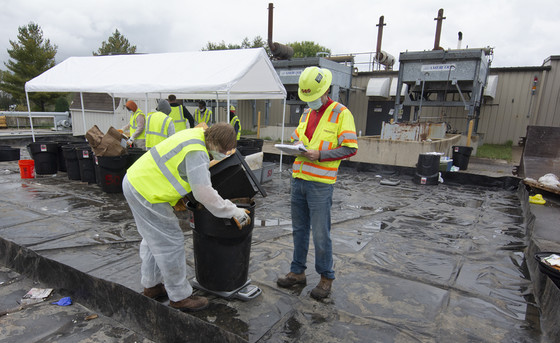
Samples are weighed before heading to the sorting table. Photo credit: Wisconsin DNR
Turning trash into invaluable information, the Wisconsin DNR launched a waste characterization study at Wisconsin landfills.
This past September, SCS Engineers began collecting and sorting samples of municipal solid waste at landfills across the state as part of a study aimed at better understanding what Wisconsinites are throwing in the trash.
The results of the study will provide a powerful planning tool for waste reduction and minimization efforts across the state, and when compared to prior studies conducted in 2003 and 2009, will help officials identify trends in waste and recycling. The study will be released publically to benefit communities and possibly businesses that are considering investing in new equipment or building a new facility that can divert waste into a profit.
“Millions of pounds of materials are diverted through recycling, e-cycling, or composting every year, which keeps hazardous materials out of the environment, saves valuable landfill space, and supports Wisconsin’s economy,” said Kate Strom Hiorns, DNR recycling, and solid waste section chief. “But more can be done. This study will help determine the communication, infrastructure, and resources still needed.”
Crews will visit 12 landfills across the state to sort 400 municipal solid waste samples and visually characterize 640 construction and demolition waste loads. Crews are trained to identify 85 material types, representing eight waste categories including plastics, organics, and hazardous materials. The region, hauler type, and the source of the waste will also be recorded.
“The DNR is looking for opportunities to minimize and divert waste statewide, but also at the source or regional level,” said Casey Lamensky, DNR solid waste coordinator. “The DNR will continue to work with local governments, businesses, and organizations to ensure they have the resources they need to divert materials from the landfill.”
Waste characterization data from 2003 and 2009 provided crucial information for waste management decisions still affecting residents today. Dane County used the 2009 study, which identified construction and demolition materials as one of the top contributing material groups, to properly size a construction and demolition recycling facility at the Rodefeld Landfill.
“We hope the 2020 data will be similarly used,” Lamensky said. “Dane County is a great example of why this information is important.”
A noticeable trend now is new food packaging that not recyclable in the current system as containers shift from steel cans to multi-layer lined packages. She also noted that food waste increased between the 2003 and 2009 studies.
“This will help us get information on what we can do to help decrease the number of organics going to the landfill similar to what we did to help decrease the demolition materials,” Lamensky said. “Organics are incredibly impactful to the environment.”
In the 2009 study, 17 percent of household waste was food waste. As Lamensky explained, the food goes through production, transportation, packing, transportation, storage, and then transportation again, utilizing several resources to end up in a landfill. Additionally, when it is put in the landfill, organic waste is compacted down to the point where oxygen is removed.
“That means organic materials degrade anaerobically, or with different microbes that do not need oxygen,” she said. “The release of that is methane, which is a greenhouse gas that is 26 to 28 times more powerful than CO2. If you look at the world’s food waste just as a greenhouse gas generator, it would actually be the third-largest after the U.S. and China.”
There are some contained systems that can capture the methane and use it productively as energy or eat, and there are requirements that landfills try to collect the methane, but it can be a very expensive and labor-intensive process. The 2020 study will break down specific data on food waste to show what was edible and could have been donated and what were inedible products such as peels or eggshells.
The final report will be published this spring. From mid-October through mid-December, crews will be sampling at landfills located in Appleton, Wisconsin Rapids, Weyerhaeuser, Watertown, Muskego, Franklin, Menomonee Falls, and Eau Claire.
“I think the biggest point for the general public is just an awareness of waste,” Lamensky said. “It is so easy to put something in the garbage and then it is out of sight and out of mind because our system is very effectively managed. However, waste streams change.”
One of those key changes was the huge increase in cardboard packaging, disposable masks, and gloves because of the pandemic.
“Those need to be managed properly,” she said. “Try to think of waste as something you continue to learn about because it is something we all have to deal with.”
Those interested in learning more about recycling in Wisconsin can visit the DNR’s what to recycle page.
Wisconsin Rural Opportunities Foundation Supports Rural Summer Science Camo
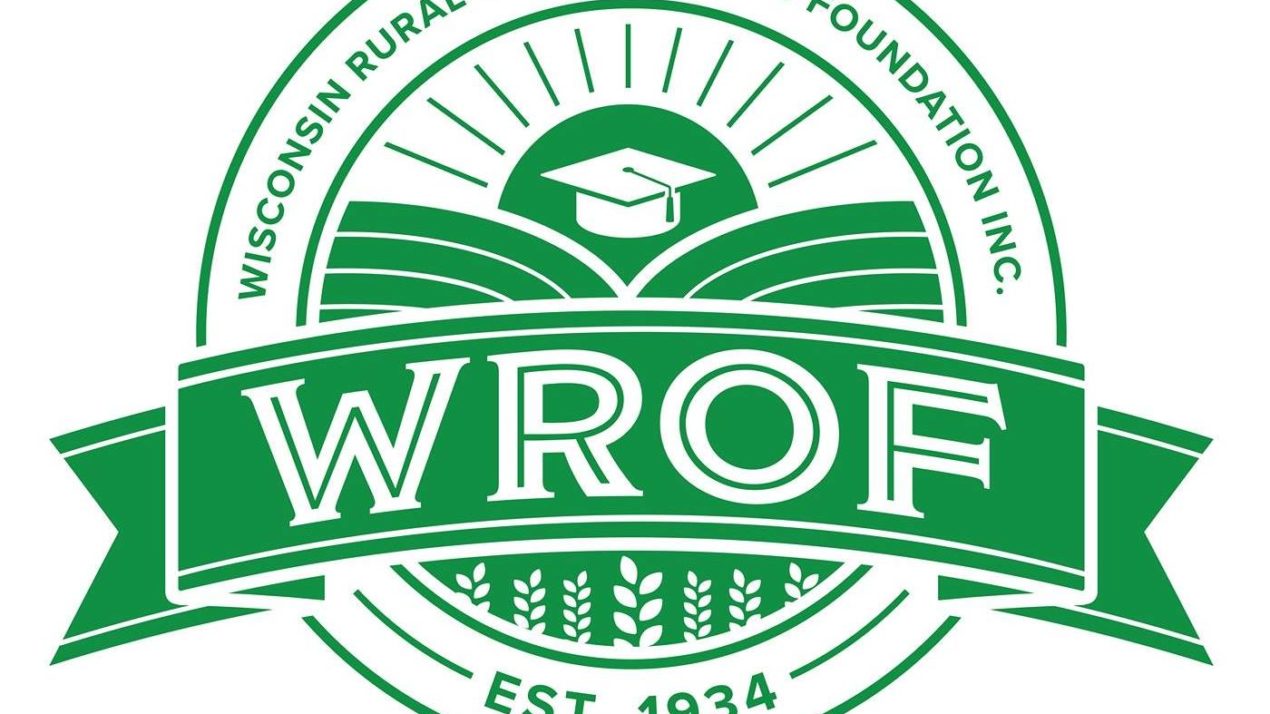
The Wisconsin Rural Opportunities Foundation (WORF) continues to be a valuable partner in outreach programs that help revitalize rural Wisconsin. This program is free to rural students and helps them explore the diversity of careers in science. Since its inception in 2007, the WROF has been supporting the program.
The workshop series brought more than 100 students and 15 teachers “face-to-face” to learn online from scientists at the Morgridge Institute for Research. The students and teachers logged on from 18 school districts in the Wisconsin Rural Schools Alliance and the Upward Bound program that focuses on underrepresented and first-generation pre-college students. Over six weeks, the students and teachers engaged with scientists working in the fields of metabolism, regenerative biology, medical engineering, medical imaging, and more.
“Through weekly Zoom calls, the students met with scientists, heard their personal stories, and began imagining their own paths into science,” says Dan Murphy, outreach and lab manager at the Morgridge Institute. During the workshop, students could select a morning or an afternoon lecture, and to Murphy’s surprise, many participated in both sessions. The students learned about the latest research at the Morgridge Institute, went on “behind-the-scenes” lab tours, and had Q&A time with the scientists.
“The opportunity opens up new possibilities for students and gives them the idea that UW-Madison is attainable for anyone,” wrote a participating rural high school teacher. “I am so thankful that this opportunity existed this summer for our students.”
Ross Soens, a graduate student in the Cantor Lab, said the summer workshop was a great way to work on his science communication skills, and to remember where he started as a budding scientist.
“I, too, was once a high school student in Wisconsin, and it was through the efforts of committed and enthusiastic teachers that I found myself on my current scientific career path,” Soens says.
Murphy says the workshop showed the Discovery Outreach team how an all-virtual experience can be a meaningful place to connect and inspire. The team is thinking about the next steps such as building in more virtual interactivity for next year. S
ince 1934, the Wisconsin Rural Opportunities Foundation, Inc. has invested in the education of people from rural Wisconsin so they, in turn, can transform and improve the economic health and quality of life in their rural areas. As a 501(c)(3) charitable foundation, more than 6000 individuals have received over $6.2 million in scholarships and grants in agricultural and rural health care education in over 30 different Wisconsin educational institutions and programs.
Rackow Family Sausage Issues Class I Recall for Summer Sausage Products

Rackow Family Sausage in Juda, WI, is issuing a voluntary Class I recall for five summer sausage products sold at its store. The recall includes the following:
- All Beef pepper cheese summer sausage with garlic and jalapenos, 0.9-lb. packages
- All Beef pepper cheese summer sausage with garlic, green olives and jalapenos, 0.9-lb. packages
- All Beef pepper cheese summer sausage with garlic, 0.9-lb. packages
- All Beef pepper cheese summer sausage with garlic, jalapenos and green olives, 0.9-lb. packages
- All Beef cheddar cheese summer sausage with garlic, 0.9-lb. packages
This is a Class I recall, initiated based on evidence collected during a routine inspection by state inspectors. Evidence shows that the products were produced without the benefit of inspection by state officials as required by law for meat products. More information on the U.S. Department of Agriculture recall classifications is available below and on USDA’s website at https://www.fsis.usda.gov.
No illnesses have been reported as a result of consuming these products. Anyone with signs or symptoms of a foodborne illness should contact their doctor. Consumers who have any of these products can return them to the original place of purchase or discard them. Consumers and media with questions about this recall can contact Jim Rackow, Rackow Family Sausage, at (608) 325-4547.
USDA Recall Classifications
| Class I | This is a health hazard situation where there is a reasonable probability that the use of the product will cause serious, adverse health consequences or death. |
| Class II | This is a health hazard situation where there is a remote probability of adverse health consequences from the use of the product. |
| Class III | This is a situation where the use of the product will not cause adverse health consequences. |
Dairy Industry Asks FDA Once Again to Enforce Labeling Rules

The following article is courtesy of the National Milk Producers Federation.
With FDA giving little indication of promised action on proper labeling of imitation dairy products, the National Milk Producers Federation today asked the agency’s ombudsman to ensure that rules are properly enforced.
“Allowing unlawfully labeled ‘plant-based’ imitation dairy foods to proliferate poses an immediate and growing risk to public health; it is a clear dereliction of the FDA’s duty to enforce federal law and agency regulations,” wrote NMPF President and CEO Jim Mulhern in the letter, sent to Dr. Laurie Lenkel, ombudsman for the U.S. Food and Drug Administration. “The FDA’s Office of the Ombudsman must intervene to break the bureaucratic logjam that is adversely affecting consumers. Doing so would fit squarely within the Office’s own mission to ensure even-handed application of FDA policy and procedures.”
The FDA ombudsman, based in the agency commissioner’s office, “serves as a neutral and independent resource for members of FDA-regulated industries when they experience problems with the regulatory process,” according to the agency. NMPF is urging the ombudsman’s office to take appropriate action to remedy the FDA’s lax approach to enforcing its own rules on the use of dairy terms on products containing no dairy ingredients, which have proven impacts on public health – a new phase of advocacy brought about by the agency’s regrettable inaction. The American Academy of Pediatrics and other organizations have offered evidence of nutritional deficiencies caused by confusion over the contents of plant-based versus dairy beverages.
NMPF last year released its own road map offering solutions to how public health, product integrity and free speech could be protected through updated regulations. NMPF also supports the DAIRY PRIDE Act, a potential legislative prod for FDA action, and has asked FDA commissioner Dr. Stephen Hahn to follow up on the pledge he made nearly one year ago to make fake-dairy labeling a high-priority issue at FDA.
United Effort To Try And Help Wisconsin Farmers And Their Families

University of Wisconsin-Madison Division of Extension and the Southwestern Wisconsin Community Action Program (SWCAP) are partnering with agencies, organizations and others to provide education, resources, and support to Wisconsin farmers, ag service professionals, mental health, and healthcare providers to mitigate farm stress and reduce suicide risk in rural communities.
In many Wisconsin farming communities, farmers, family members, or farmworkers face a lack of access to medical or mental health information, services, and treatment. Despite progress in recent years, there are continued barriers for those who want to seek care and support services because of stigma surrounding issues like depression, anxiety, substance abuse, or suicide risk.
Ongoing economic conditions continue to take a toll on Wisconsin’s farm families and others in local communities in the state’s ag service and supply sectors.
“Low prices and uncertainty for many of Wisconsin’s primary farm and food products over the last five years have created hardship and stress for many in our rural communities,” said Joy Kirkpatrick, UW Center for Dairy Profitability Outreach Specialist. “On top of that, the 2020 COVID-19 pandemic has compounded stress levels as we saw the ‘farm-to-table’ supply chains break down or get clogged up, especially in the spring and early summer of 2020, affecting farmers, workers, and consumers.”
These conditions have led to many concerns about the high levels of farm stress, health concerns, and increased suicide risk. A recent Wisconsin Department of Agriculture, Trade & Consumer Protection (DATCP) Dairy Producer Survey (March 2020) found that almost 10% of respondents have felt the need to access mental health services in the past year for themselves and/or a family member due to farming challenges.
Because of these needs, the University of Wisconsin has engaged with partners to provide education, support, and activities to support the state’s farming communities. Several efforts are led by UW-Madison Division of Extension, the College of Agriculture and Life Sciences, the School of Human Ecology, and UW-Platteville. Since 2019, Extension has focused resources on farm stress education which can be accessed through the Resilient Farms, Families, Businesses & Communities Resource Center. These focused efforts positioned University of Wisconsin to leverage efforts for two newly funded projects:
Farm and Ranch Stress Assistance Network (FRSAN)
UW-Madison Extension educators in the College of Agricultural and Life Sciences and UW-Platteville are partnering with DATCP’s Wisconsin Farm Center to focus on farm financial management and future planning through a newly funded multi-state project. The Wisconsin team joins Extension services and other organizations in the Midwest. This effort, the North Central Farm and Ranch Stress Assistance Center, is supported through the U.S. Department of Agriculture’s National Institute of Food and Agriculture (NIFA) Farm and Ranch Stress Assistance Network grant. Wisconsin joins the University of Illinois and Illinois Extension who will lead the 12-state collaborative. Over several years, the $7.2 million award will create and expand statewide access to financial, stress management, and mental health resources for farmers and other stakeholders. Wisconsin will receive over $400,000 to provide education and support to Wisconsin farmers, ag-related businesses, mental health, and healthcare providers to mitigate farm stress.
As a partner in the Wisconsin effort, the Wisconsin Farm Center will be creating farmer focus groups, developing and implementing mental health provider trainings, and assisting with other activities that focus on farmer mental health needs. “As stress among farmers continues to run high, we are excited to be joining with UW-Madison Extension and other partners to help Wisconsin farmers and their families overcome mental health related challenges through this unique collaboration,” said Jayne Krull, DATCP’s Farm Center Director.
Wisconsin Partnership Program
A second grant funded in October 2020, supports the farm stress, mental health, and medical care needs of farmers, families, and farmworkers in a five-county region of southwest Wisconsin. This project is led by the Southwestern Wisconsin Community Action Program (SWCAP) and is titled “Addressing Stressors, Preventing Farmer Suicide: Social Connectedness and Health.”
The project team includes SWCAP, UW-Madison Division of Extension, the College of Agricultural and Life Sciences, and the School of Human Ecology’s Center for Community and Nonprofit Studies. The $1 million grant, over five years, will address mental health needs of Wisconsin farmers and workers. The projects goals include reducing suicide risk in this population. The team will work closely with farmers, community leaders, health professionals, and others to develop a range of activities and resources designed to build resilience and knowledge among families, local businesses, services, medical and mental health care providers and others. The project will support and empower rural residents to strengthen the social connections and to leverage educational efforts on farm diversification and financial stabilization.
This project is one of six grants funded by the Wisconsin Partnership Program at the University of Wisconsin School of Medicine and Public Health through its Community Impact Grants program. The projects were selected for their potential to create policy, environmental, and systems change that advance health equity and lead to equitable and sustainable improvements in health.
Together, these new Wisconsin projects seek to engage farmers, family members, workers, and the wide range of individuals that provide products, services, technical information and support to those in the industry who produce the food and farm products that keep us healthy and safe during these challenging times.
“We feel strongly that the answers to some of the concerns, barriers and challenges in our state’s farming communities are embedded within those in our communities,” said John Shutske, Director, UW Center for Agricultural Safety and Health. “In our rural areas, there is an incredible gold mine of wisdom, experience, and knowledge. But, because of changes in technology, an aging population, and other shifts, it’s not always possible for ideas and actions to ‘come together’ especially across geographical and time barriers. Our job will be to help communities and leaders to weave resources together in ways that benefit us all.”
WPA Seeking Youth Pig Project Sponsors
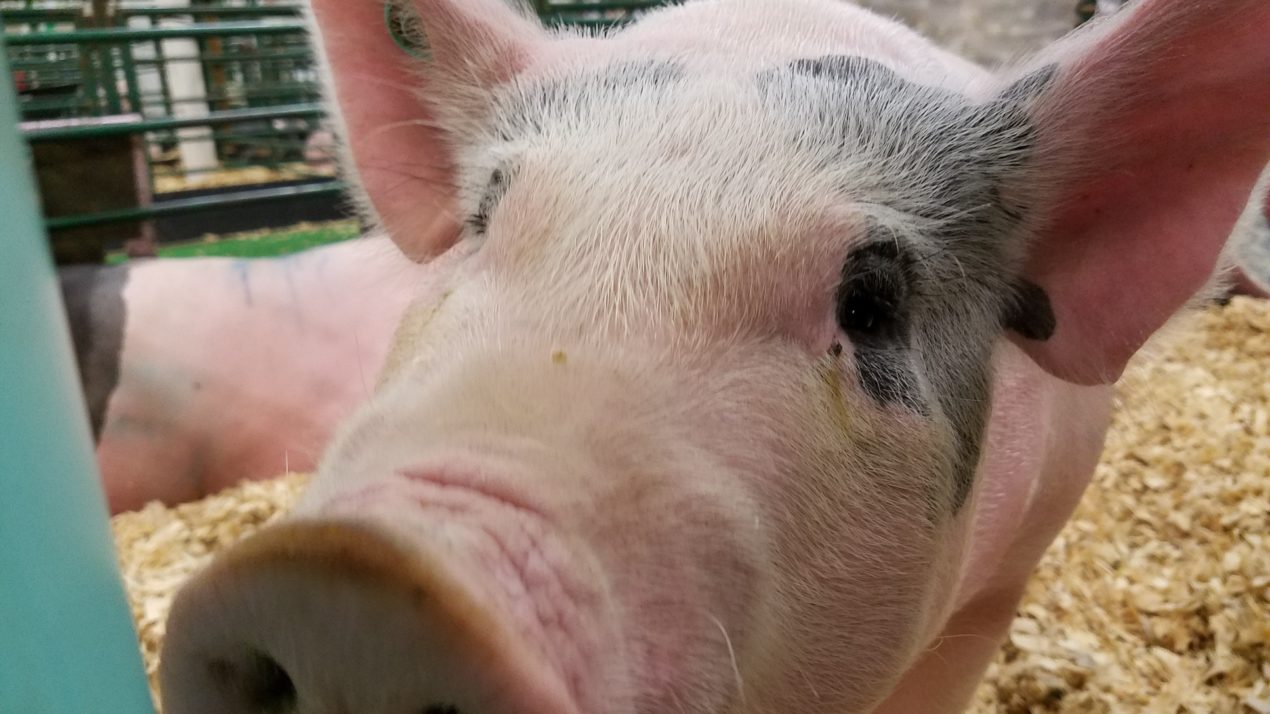
Wisconsin Pork Association (WPA) is accepting sponsorships for the 2021 Youth Pig Project. Since 2003, WPA has offered Wisconsin 4-H and FFA Youth $50 scholarships to help offset the costs associated with their pig projects. The scholarship program, developed and led by the WPA Youth Committee, is designed to assist youth in establishing swine projects that can lead to the development of life skills and career opportunities in the Wisconsin pork industry.
Pig producers can become a blue, red, or white sponsor by contributing $100, $75, $50 or give an amount of their choosing. Sponsors will receive recognition of their support through WPA news releases, the website, Pork Express e-newsletter and Headlines newsletter. All sponsors will be listed in a letter to the applicants and blue ribbon sponsors may list their sale date(s) on the WPA website calendar.
The project requests applicants to outline their project goals, develop a budget, and explain why they should receive the scholarship. They must also describe their future goals in the pork industry. Last year, WPA received 85 applications and awarded 46 youth pig project scholarships thanks to WPA sponsors.
“I want to thank you for doing this for kids like me. I was not able to show and sell my hog at the fair, but I donated the pig and all processing to a family in need.”– 2020 Scholarship Award Winner
To sponsor, visit WPA’s website at www.wppa.org. Please submit sponsorship information to Wisconsin Pork Association by December 1, 2020. If you have any questions or would like more information, please call the WPA office at 608-723-7551 or email [email protected]
Project to expand supply chains for regional grains to local cafeterias
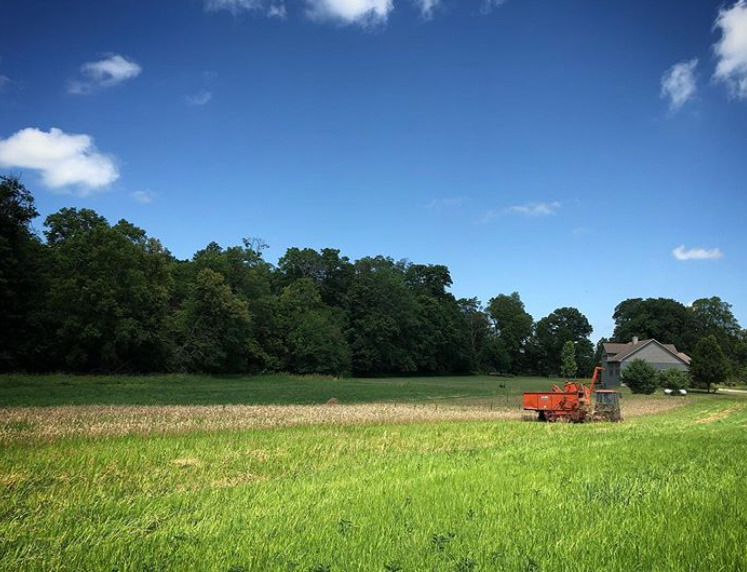
Farm to institution, the practice of purchasing locally grown foods in the foodservice setting at schools, hospitals, colleges and business campuses, is a growing movement that supports area farmers and increases meal quality. Institutions represent a significant potential market opportunity for grain growers who currently struggle with market access. And while many institutions already purchase grain in many forms, they may currently lack the relationships, staff capacity, and culinary confidence to choose locally grown grain. A newly funded project aims to create tools and support to help increase the ease of use of delicious regionally produced grains in local institutions.
The Center for Integrated Agricultural Systems (CIAS) at the UW–Madison College of Agricultural and Life Sciences was recently awarded a $516,000 grant through the USDA Agricultural Marketing Service’s Farmers Market Promotion Program to address this work. The three-year project, titled “Grains to Institutions: Expanding Value Chains and Cultivating Resources for Upper Midwest Grain Growers,” will work in partnership with Artisan Grain Collaborative (AGC) and Upper Midwest grain producers, processors, and Wisconsin partner institutions to create multifaceted resources for regional farmers and foodservice audiences nationwide.
This project will develop a suite of resources for entities across the grain value chain from growers to buyers to accelerate procurement of local grains and continue to grow farm to institution efforts. Planned resources include an institutional culinary toolkit including explanations of different local grains; information about storage, processing, and cooking; and new cafeteria-friendly recipes. These materials will be complemented by farmer stories about how and why producers choose to grow these grains, an analysis of available processing and supply chain infrastructure, and recommended strategies for on-farm grain cleaning, sorting, and processing for institutional end-users.
“The importance of building a regional grain value chain has become particularly evident throughout the COVID-19 pandemic, as farms and mills have stepped up to fill grain and flour shortages created by bottlenecks in global supply chains and the consolidated processing infrastructure,” says Brianna Fiene, CIAS Farm to Institution Outreach Specialist. “This project presents an opportunity to expand existing efforts to connect grains to people in public and community settings throughout Wisconsin and the Upper Midwest, including hospitals, colleges and K-12 schools.”
This project directly addresses infrastructure needs and leverages established relationships through the Wisconsin Farm to School Network, AGC’s Producer Collaboration Working Group and other regional grain organizations to support more farms in getting grain out of the field and onto the trays of students, workers and patients. For more information contact: Brianna Fiene, [email protected].
You’re Not Done With That Garden Yet
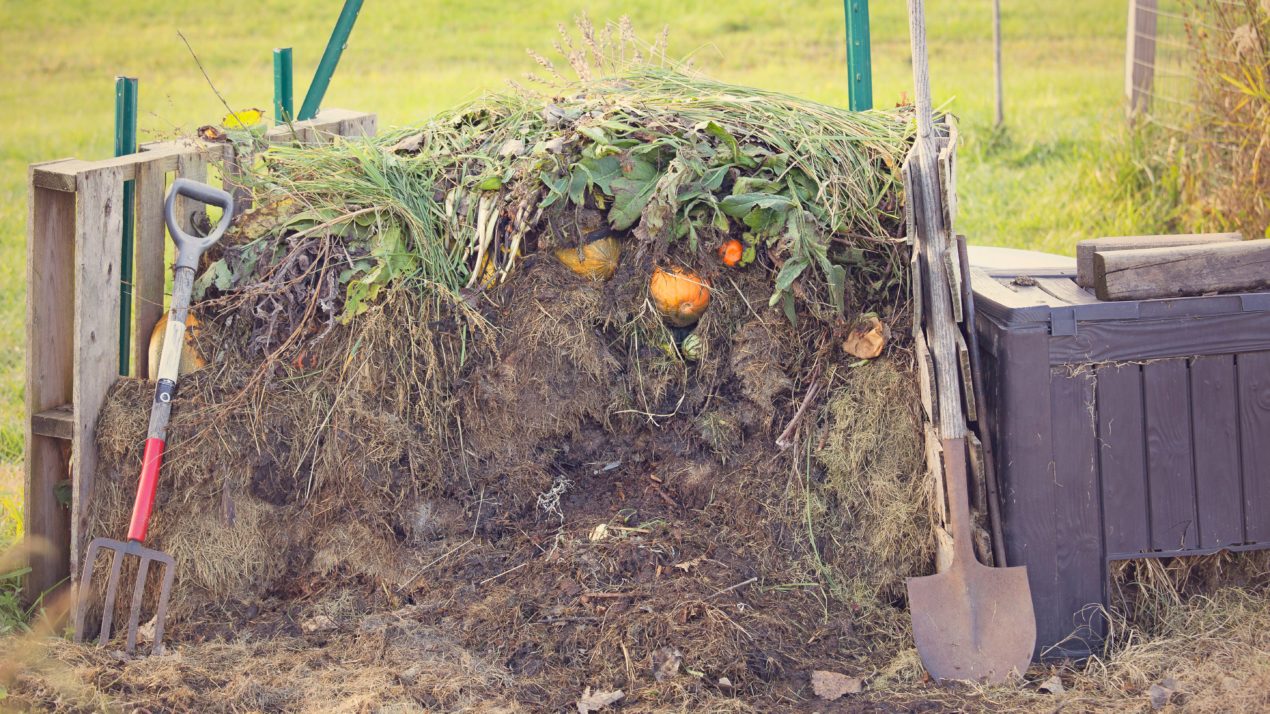
Although weather in Wisconsin may have put an end to the growing season, that doesn’t necessarily mean you’re done with your garden.
Mindy Habecker, Dane County UW-Extension Natural Resources Outreach Specialist has been an instructor for the Master Composter program for a number of years. She suggests you think about what you can still harvest from your garden in the form of compost materials.
Habecker says that there’s actually some specific science you need to keep in mind if you want your composting efforts to pay off. First, make sure the compost pile itself is manageable! 3X3X3 is a good place to start. 3 feet high, wide and deep for that compost container or pile, otherwise she suggests working with windrows to get your best mix.
And what about that mix? Habecker says almost anything can be incorporated into the compost pile if you just remember to keep some simple science principles in place. The pile itself has to have active biology – meaning everything has to get along. Ample moisture is key to helping components break down and begin fermentation. Yard clippings can be layered in with food waste, as well as garden materials, to get the process moving.
Habecker does advise to be careful with food waste! If you don’t want four-legged visitors in your compost pile, keep out food waste like meat, dairy, and fats. They will not assist your compost breakdown.
Habecker will be presenting more instruction on putting together your best compost combination during a fall “Green Thumb Gardening” series on Monday, November 9th from 6-8 p.m. Register here.
Annual Badger Swine Symposium Happening November 5th

Wisconsin may be known as the dairy state, but ties to swine production in Wisconsin run deep. Historically, immigrant populations demanded pork for the manufacture of sausage and other products, leading to as much as 80% of all Wisconsin farms having pigs on the farm in the early twentieth century. Pig farming looks different today with less total farms that have pigs on them, but raising pigs continues to be an important part of agriculture in Wisconsin.
The seventh annual Badger Swine Symposium is being held virtually Thursday, November 5, 2020. With the shift to virtual this year due to the pandemic, we are restructuring the program to run around the lunch hour from 12 pm to around 2:15 pm. The program is free to attend, but you must be registered by November 3. In acknowledgement of the change to format for the symposium this year, some research updates will be pre-recorded and available for viewing on Monday, November 2. Pre-recorded sessions can be found at https://livestock.extension.wisc.edu/programs/badger-swine-symposium/.
The live portion of the symposium will kick off at 12:00 pm. The day will start off with a market update from Brenda Boetel, Professor and Agricultural Marketing Specialist with UW-River Falls. Following the market update will be a panel discussion of industry stakeholders on how COVID has affected their operations, markets, and management. To wrap up the discussion, Jeff Swenson of the Wisconsin Department of Agriculture, Trade and Consumer Protection, will talk about how Wisconsin has developed additional plans, resources, and community connections in response to the potential need to implement mass euthanasia of swine due to limited slaughter plant capacity. Please note that these live sessions are not being recorded.
Additional speaker information, a registration brochure, and other details can be found at https://livestock.extension.wisc.edu/programs/badger-swine-symposium/. You may find the registration link here, or you can register directly at http://bit.ly/20BadgerSwine. This program is sponsored by the Animal and Food Science Department at UW-River Falls, School of Agriculture at UW-Platteville, Animal and Dairy Science Department at UW-Madison, the Extension Swine Team and the Wisconsin Pork Association.

